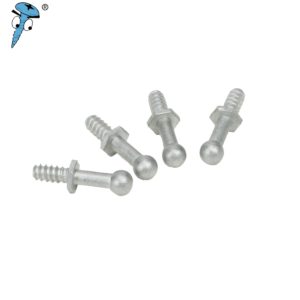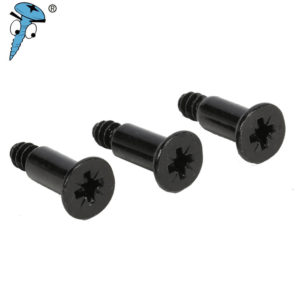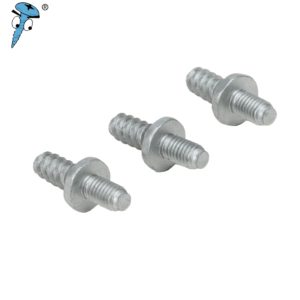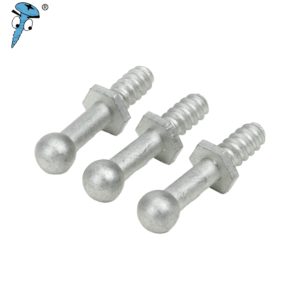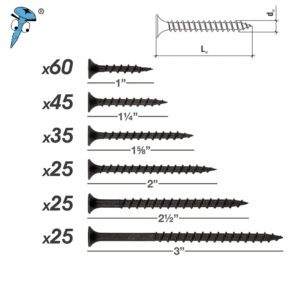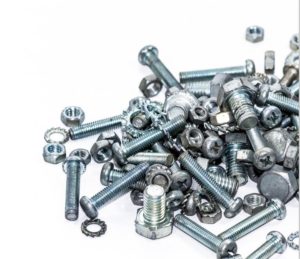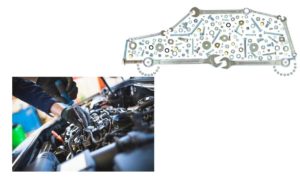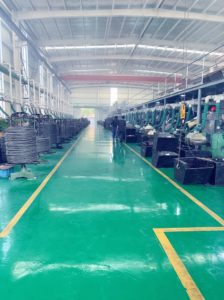The most common failures and analyses of fasteners
There are many reasons for fastener failure, but according to survey statistics, most failures are caused by the installation or use errors.
Less than 1% of the reasons are defects in the material itself.
The most common failures come from overloading and underloading of fasteners; many factors can cause this phenomenon.
01 Overload
Overloaded means the bolt has been stretched beyond its yield strength.
This type of failure can be identified by the “necked down” appearance, as shown in Image 1.

Overloaded fasteners can cause loose connections. The fastener will slightly elongate if the external load exceeds the proof or yield strength.
When the external load is removed, the joint returns to an elastic state, but the bolt has undergone plastic deformation and may not have “necked down”, but the pitch has changed.
Therefore, it is necessary to check the thread pitch of the tightened fastener because thread deformation is not always visible, and the thread pitch of the fastener in question can be checked with a thread ring gauge.
However, when ring gauges are not available, new bolts of the same diameter and pitch can compare pitch.
It is also very important to check the entire length of the thread since the pitch of the thread does not change substantially due to the engagement of the threaded portion because all stretching and thread deformation occurs between the nut head and the bolt head.
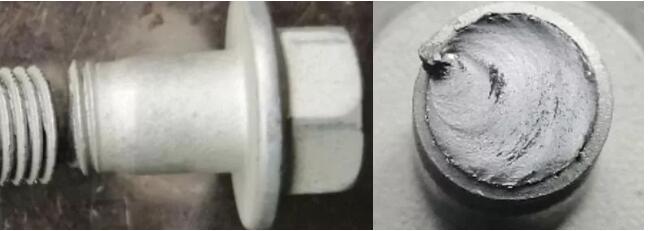
02 The reason for Overload
1. Insufficient bolt strength
The installation torque is too large, and the preload is close to the strength of the bolt.
Because the bolts also bear the working load and the residual pre-tightening force when the machine is running, if the sum of the two forces is greater than the strength of the bolts, overload fracture occurs.
2. Unreasonable torque
The tightening torque is too large, and the preload exceeds the strength of the bolt, which can be found during installation.
3. Lubrication
When the bolt is tightened, the lubricating oil reduces the friction between the mating threads.
Too low a coefficient of friction can cause the fastener to be stretched beyond its yield point.
4. Power wrench
Pneumatic or hydraulic power relies on pressure regulation, and the control is imprecise.
Air wrenches are much faster than hydraulic wrenches, and due to inertia, the wrench continues to turn, causing the fastener to exceed the yield point.
The use of an impact wrench can be seen in the damage to the hexagon of the nut, where the socket constantly hits the corners of the nut, causing significant deformation, as shown in image 2.

5. Assembly speed
The bolt is more likely to be stretched to yield or break if the assembly speed is high because too fast speed reduces friction.
Excessive speed can also cause a spring back effect, which in some cases can cause the fastener to be stretched to yield as the connecting material recovers its shape from compression.
6. Elevated temperature
The connection material expands with heat if the fastener is tightened to yield while connected; expansion of the connection can cause the fastener to be stretched further.
As it cools, this will cause the bolts at the connection to loosen, at which point checking the thread spacing is necessary.
03 Insufficient load
If the bolt is not tightened enough, the resulting clamping force is less than the applied external load, which will lead to fatigue failure of the bolt.
Fatigue failure usually occurs in heat-treatable types of metals. It does not occur when tightening, and failure occurs only when subjected to high-frequency dynamic loads during use.
This type of failure mechanism is similar to the repeated bending of a coat hanger wire. Because of this repeated movement, stress propagates through the grain boundaries of the metal until there is a little cross-sectional area left to support the external load, and on the next impact, it snaps off.
Stress can also start at other points, which are voids, defects, scratches, or other discontinuities in the metal surface. Once a crack develops, it propagates through the core of the bolt with each impact load until the remaining metal area can no longer support the next impact. The fracture occurs immediately at this point.
Typically, fatigue occurs at the first unmeshed thread or the intersection of the polished rod to the thread. If the fillet radius under the bolt head is scratched or damaged, stress will develop, and failure will occur under the bolt head.
As shown in Image 3, the metal fatigue pattern consists of a shell-like or “beach-like” shape.

The fatigue source in Image 3 starts at the marked location and runs through the bolt body until it finally breaks in the dark area. The change in the dark to light bands indicates the frequency and intensity of the external load.
04 Reasons for insufficient load
1. Mismatched fastener components
Check grade markings on nuts and bolts for matching.
2. Embed
If the bolt head or nut impression is visible on the joint surface or flat washer, the clamping load is lost.
A small number of embedding results in a large load loss.
Continued load shocks can result in further embedment and loss of clamping force.
3. Debris in threads or threaded holes
Any foreign material will increase thread friction, give erroneous torque readings, and reduce clamping loads.
4.Burrs
The burr leads to a flat surface, and the connection surface cannot be flat and connected in parallel.
Excess metal can be compressed during assembly, resulting in loose joints.
The edge of the burr can burrow into the fillet radius of the bolt drop, resulting in a stress lift or notch effect for fatigue.
5. Unreasonable torque
Too little torque results in insufficient clamping force to withstand external loads
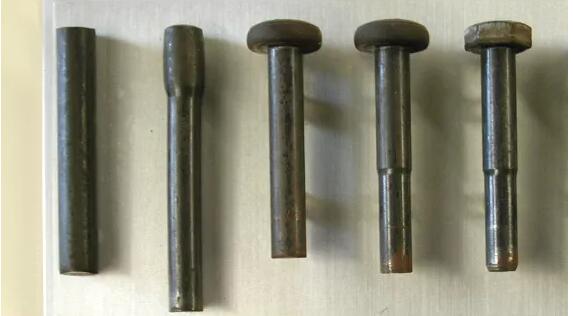
6. Incorrect tightening sequence
Apply full torque to all fasteners, which can also cause some bolts to loosen due to the wrong tightening sequence.
The correct procedure is to increment the tightening pattern in a criss-cross sequence.
7. Reusable Nuts
The nut develops more thread friction with each repeated use, resulting in less clamping load even with the same torque value.
After the product breaks or escapes, the sample should be kept well, and the fracture of the sample should be protected to avoid corrosion.
According to its failure mode and operating conditions, analyze the failure cause and take corrective measures to avoid similar problems.
If you have any questions or suggestions, need source files, or need to communicate with us, you can contact Prince Fastener.


